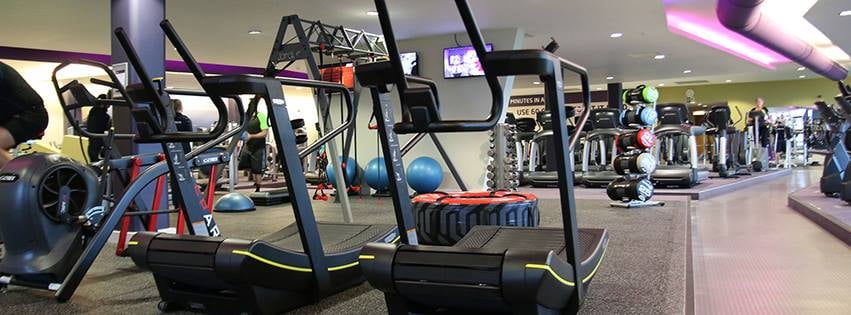Fire Damper Testing
- How It Works
- Featured Project
- Insights
How It Works
About Fire Damper Testing
Our comprehensive fire damper testing service ensures your building's fire safety systems operate correctly when needed.
We conduct thorough inspections and functional testing of all fire and smoke dampers throughout your ventilation system, documenting their condition and operation in accordance with BS 9999, DW145, and other relevant standards.
Our detailed reports identify any non-compliant installations or operational issues, providing clear recommendations for remedial actions to ensure your building meets all regulatory requirements.
Service Benefits
- BS 9999 and DW145 compliant
- Comprehensive documentation provided
- Reduced fire safety risks
- Expert remediation advice
Featured Project
An array of IAQ services for a Hampshire leisure club

Objectives
We were called to a Hampshire-based leisure club in 2023 for a range of different IAQ servicing tasks including air handling unit (AHU) maintenance. With up to hundreds of gym members in the building at any one time, clean, ventilated air is essential. In this environment in particular, with swathes of people breathing heavily after a tough workout, CO2 can rise into dangerous levels if the polluted indoor air is not properly mixed with clean outside air.
We were asked to perform the following tasks as part of the club's general maintenance: fire damper maintenance, fitting new duct access doors, perform a Ventilation Hygiene Risk Assessment (VHRA), perform AHU servicing and cleaning, perform plenum cleaning, and remove grease from the kitchen extractor.
Solutions
Our expert team got to work on these tasks over the course of the week. We completed each of these tasks to a professional standard and recorded the results with photographs to build a completion report.
All in all, our client was very pleased that we could help them remain compliant and keep their members safe, healthy, and happy. The last thing these gym members want is to breathe harmful, polluted air, so we're glad we could improve the air quality in this space.
Results
This maintenance work is essential for maintaining compliance with UK laws and legislations, and is particularly important in a space like this in which the ability to breathe clean, filtered air is incredibly important for health. Some of the tasks we completed, like commercial kitchen extractor fan and ductwork cleaning, are about more than just meeting compliance (like BESA TR19) -- it's about making sure the building remains safe for everyone. Especially where large groups of people are concerned, reducing fire risks are paramount.
Challenges
- Variety of different maintenance tasks
- Health-conscious client
- Large operation
"When you're dealing with a high-traffic facility like a leisure club, where hundreds of people are exerting themselves every day, poor air quality isn't just uncomfortable -- it's a health risk. Our team was brought in to carry out essential servicing, from AHU cleaning to fire damper maintenance, all aimed at keeping the environment compliant and, most importantly, safe. Spaces like this demand constant vigilance when it comes to ventilation; CO₂ levels can rise rapidly without proper airflow."
Adam Taylor, CEO of ARM Environments
Compliance
Wellbeing
Safety
Insights
Related Insights
Fire Damper Testing FAQs
How often should fire dampers be tested? ↓
UK regulations require fire dampers to be tested at least once every 12 months. Initial testing should be conducted after installation, with ongoing annual inspections thereafter. Buildings with higher fire risks or critical operations may require more frequent testing.
What standards govern fire damper testing? ↓
Fire damper testing must comply with BS 9999, DW145 guidance from BESA, and the Building Regulations Approved Document B. Our testing procedures adhere to all current standards, including the upcoming 2024 revision of DW145.
What does the testing process involve? ↓
Our testing includes visual inspection of damper condition, functional operation testing, verification of correct installation, and documentation of results. We check for obstructions, damage, corrosion, and ensure fusible links are intact and operational.
How do you access fire dampers for testing? ↓
We access dampers through existing maintenance access panels where available. For dampers without proper access, we can advise on the installation of access panels to ensure compliance with regulations that require all fire dampers to be accessible for inspection.
What documentation do you provide? ↓
We provide comprehensive documentation including inventory of all dampers tested, photographic evidence, detailed findings, pass/fail status, and specific recommendations for remedial work if required. This documentation serves as evidence of compliance for insurance, fire safety officers, and building certification.
Concerned About IAQ?
Contact us today for expert advice and a professional survey.
Why Choose ARM?
ARM Environments brings specialist expertise to fire damper testing, ensuring your building's passive fire protection systems are fully functional and compliant. Our intimate knowledge of ventilation systems and building regulations allows us to identify issues that generalist inspectors might miss.
Our SafeContractor and BESA certifications demonstrate our commitment to safe, quality work in all environments. Unlike general fire safety contractors, we understand both the fire safety and ventilation aspects of damper installation and operation.
We provide clear, actionable reports that help you prioritise any remedial work required, ensuring your building remains safe and compliant with current and upcoming regulations.


